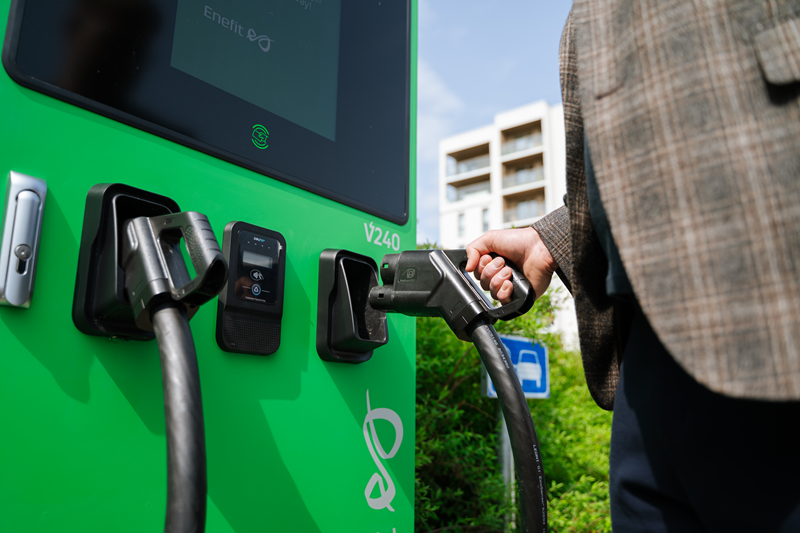Although the summer months usually bring lower electricity costs, the winter heating season accounts for a significant share of the annual electricity bill. Considering that cold weather is not far off, it’s worth reviewing your daily consumption habits and the energy efficiency of your household appliances.
One of the more insidious sources of household electricity costs is a group of devices that people don’t usually think of straight away. These are electronic appliances that remain plugged in around the clock – so-called ‘energy vampires’ – which can account for as much as 10% of your electricity bill.
In modern homes, offices and shops, there may be as many as twenty such devices. These include, for example, the dishwasher, washing machine, fridge, microwave oven, cooker or even an integrated coffee machine.
Many appliances remain in standby mode after use, continuing to consume small amounts of electricity. Standby mode ensures a quick restart or maintains a connection – for example, to display the time, keep an internet connection active or enable remote control.
Older appliances can be particularly costly, as they consume several times more electricity compared to modern machines. High electricity use can be caused by anything from an old television to a constantly running freezer with a low energy class. Replacing a 20-year-old fridge with a new A or B class model could save around twenty euros per year. In addition, many newer appliances offer eco modes that help optimise electricity and water consumption.
Let’s compare the typical annual electricity consumption of different types of appliances:
| Electrical appliance | Average usage time per year | Annual consumption, kWh | Financial cost per year at the price of 12 cents/kWh |
| Fridge (energy class D) | 365 days 24 h | 200 | €24 |
| Older fridge | 365 days 24 h | 600 | €72 |
| Ceramic hob 2000 W | Twice a day | 260 | €31.20 |
| Induction hob 2500 W | Twice a day | 210 | €25.20 |
| Washing machine (energy class C) | 200 uses/year | 180 | €21.60 |
| Washing machine (energy class F) | 200 uses/year | 270 | €32.40 |
| Tumble dryer (energy class A+++) | 100 uses/year | 200 | €24 |
| Tumble dryer (energy class C) | 100 uses/year | 500 | €60 |
| Plasma TV 55” + standby | 4 h/day + 365 days 24 h | 480 kWh + 40 kWh | €57.60 + €4.80 |
| LCD TV 40” + standby | 4 h/day + 365 days 24 h | 150 kWh + 15 kWh | €18 + €1.80 |
| LED TV 55” + standby | 4 h/day + 365 days 24 h | 90 kWh + 2 kWh | €10.80 + €0.24 |
| Electric oven 3000 W | 3 × 1.5 h/week | 150 | €18 |
| Dishwasher (energy class D) | 5 × per week | 200 | €24 |
| Microwave 1000 W | 1.5 × per week | 60 | €7.20 |
Six tips for reducing costs:
1. Disconnect appliances from the power supply
Keeping appliances constantly plugged in can add a considerable amount to your annual electricity bill. If you know you won’t be using a device for a while, or you’re going away for an extended period, unplug it from the socket where possible.
2. Check and replace if necessary
Technology is constantly evolving, and appliances that have been in use for years can become outdated. It is therefore advisable to check every 10 years whether your household appliances are still efficient and up to date. Newer models are significantly more energy-efficient and often come with eco modes.
3. Choose the optimal time to use appliances
There are various apps available that help users identify when electricity prices are at their lowest – it makes sense to use large, energy-intensive appliances (such as washing machines or dishwashers) during these periods.
Good to know: If you have a battery storage system, you’re not dependent on market electricity prices. Smart electricity storage and demand management allow you to use affordable electricity precisely when it’s needed most.
4. Use appliances smartly
Don’t use more than you need. For example, only fill the kettle with as much water as you intend to use, cover pots with lids when cooking, avoid running the dishwasher or washing machine half empty and keep a reasonable amount of food in the fridge – both nearly empty and overfilled fridges tend to consume more energy than average.
5. Monitor your consumption in real time
Most households have been switched to remotely readable electricity meters. For instance, the Enefit app allows you to track your electricity consumption with hourly accuracy. This helps you understand when and which appliances consume the most, so you can adjust your habits accordingly. If you save even one kilowatt-hour through smarter use, it can reduce your electricity bill threefold, as associated costs and charges will also decrease.
6. Sign a fixed-price electricity contract
In households that use electric heating, where demand management is difficult or where electricity bills are higher than average, it may be worth considering a fixed-price electricity contract. This way, you can be sure that the price per kilowatt-hour remains the same every month, and fluctuations in the electricity exchange price will not affect your bill. You can explore different contract options on the Enefit website.
For households with higher electricity bills, larger buildings or office complexes, it may also be worth considering an energy audit. An energy audit is a service in which a professional auditor visits your home to identify which of your appliances consume the most energy and provides recommendations on how to start saving.
Getting started with saving energy is incredibly easy! The most important step is identifying the energy vampires, after which experts can help you find the best energy solutions tailored to your home.



